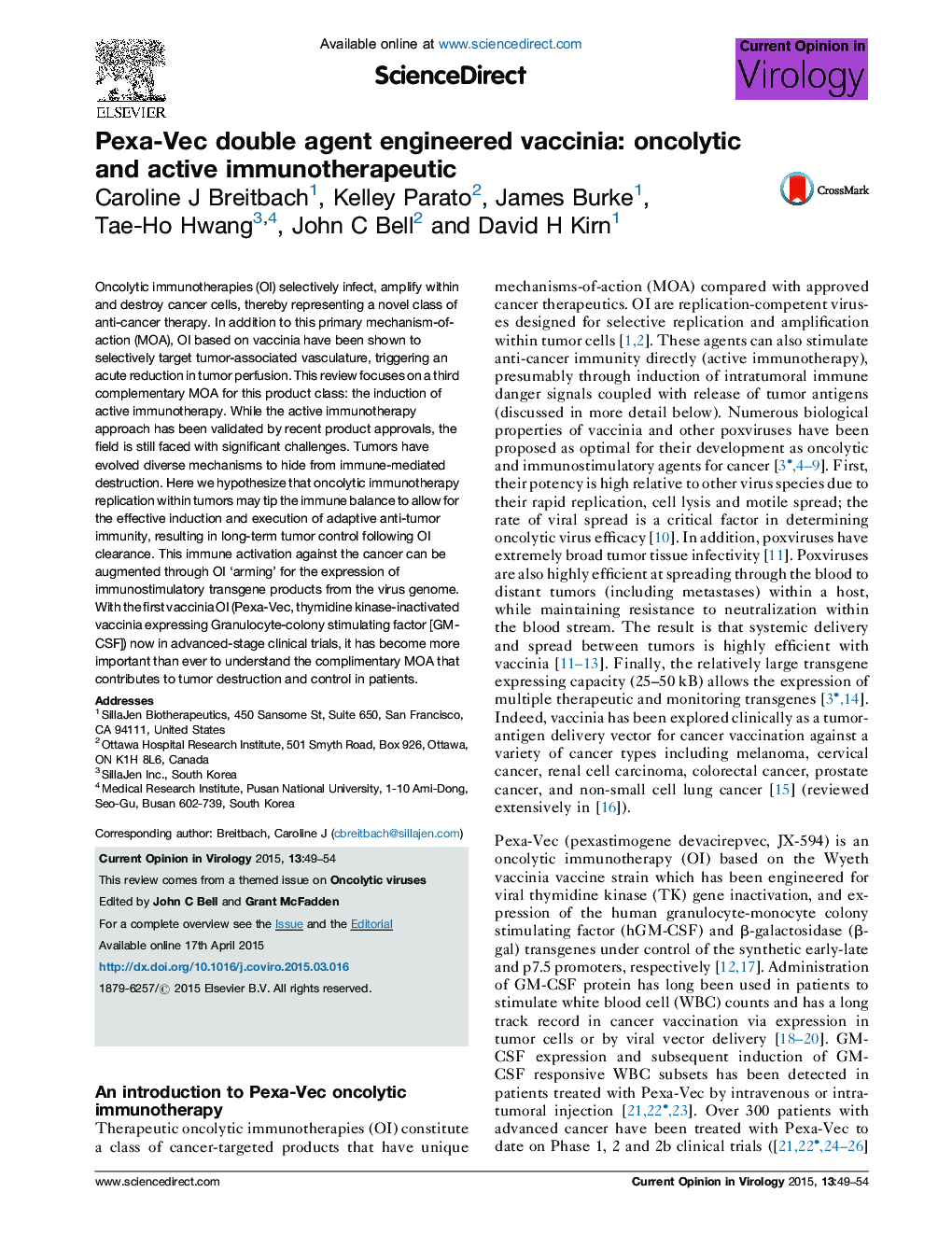| Article ID | Journal | Published Year | Pages | File Type |
|---|---|---|---|---|
| 2473281 | Current Opinion in Virology | 2015 | 6 Pages |
•Pexa-Vec is an oncolytic immunotherapy which targets tumors by multiple mechanisms-of-action.•Pexa-Vec has the potential to overcome challenges with approved active immunotherapy approaches.•Oncolytic immunotherapies can be ‘armed’ by expression of immunostimulatory transgene products.
Oncolytic immunotherapies (OI) selectively infect, amplify within and destroy cancer cells, thereby representing a novel class of anti-cancer therapy. In addition to this primary mechanism-of-action (MOA), OI based on vaccinia have been shown to selectively target tumor-associated vasculature, triggering an acute reduction in tumor perfusion. This review focuses on a third complementary MOA for this product class: the induction of active immunotherapy. While the active immunotherapy approach has been validated by recent product approvals, the field is still faced with significant challenges. Tumors have evolved diverse mechanisms to hide from immune-mediated destruction. Here we hypothesize that oncolytic immunotherapy replication within tumors may tip the immune balance to allow for the effective induction and execution of adaptive anti-tumor immunity, resulting in long-term tumor control following OI clearance. This immune activation against the cancer can be augmented through OI ‘arming’ for the expression of immunostimulatory transgene products from the virus genome. With the first vaccinia OI (Pexa-Vec, thymidine kinase-inactivated vaccinia expressing Granulocyte-colony stimulating factor [GM-CSF]) now in advanced-stage clinical trials, it has become more important than ever to understand the complimentary MOA that contributes to tumor destruction and control in patients.
